Hyundai IONIQ 5 vs Mercedes EQE – Performance, range & efficiency compared
Compare performance, boot capacity, efficiency and price at a glance.
Find out which car is the better choice for you – Hyundai IONIQ 5 or Mercedes EQE?
Costs and Efficiency:
Price and efficiency are key factors when choosing a car – and this is often where the real differences emerge.
Hyundai IONIQ 5 has a decisively advantage in terms of price – it starts at 38500 £, while the Mercedes EQE costs 57600 £. That’s a price difference of around 19103 £.
In terms of energy consumption, the advantage goes to the Hyundai IONIQ 5: with 15.60 kWh per 100 km, it’s barely noticeable more efficient than the Mercedes EQE with 15.80 kWh. That’s a difference of about 0.20 kWh.
As for range, the Mercedes EQE performs somewhat better – achieving up to 691 km, about 121 km more than the Hyundai IONIQ 5.
Engine and Performance:
Power, torque and acceleration say a lot about how a car feels on the road. This is where you see which model delivers more driving dynamics.
When it comes to engine power, the Hyundai IONIQ 5 has a slight edge – offering 650 HP compared to 625 HP. That’s roughly 25 HP more horsepower.
Both models accelerate almost equally fast – 3.50 s from 0 to 100 km/h.
In terms of top speed, the Hyundai IONIQ 5 performs slightly better – reaching 260 km/h, while the Mercedes EQE tops out at 220 km/h. The difference is around 40 km/h.
There’s also a difference in torque: Mercedes EQE pulls to a small extent stronger with 950 Nm compared to 770 Nm. That’s about 180 Nm difference.
Space and Everyday Use:
Beyond pure performance, interior space and usability matter most in daily life. This is where you see which car is more practical and versatile.
Both vehicles offer seating for 5 people.
In curb weight, Hyundai IONIQ 5 is noticeable lighter – 1955 kg compared to 2375 kg. The difference is around 420 kg.
In terms of boot space, the Hyundai IONIQ 5 offers somewhat more room – 520 L compared to 430 L. That’s a difference of about 90 L.
When it comes to payload, Mercedes EQE somewhat takes the win – 600 kg compared to 530 kg. That’s a difference of about 70 kg.
Who wins the race?
The Hyundai IONIQ 5 proves to be wins solidly and therefore becomes our DriveDuel Champion!
Hyundai IONIQ 5 is the better all-rounder in this comparison.
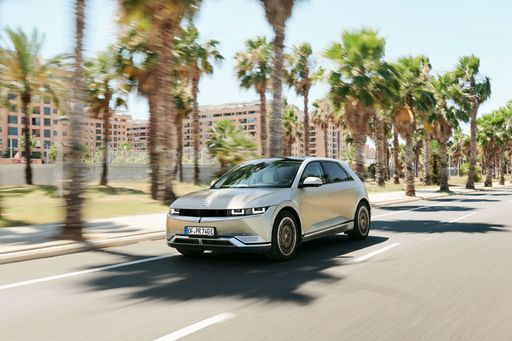
Hyundai IONIQ 5
Hyundai IONIQ 5
The Hyundai IONIQ 5 showcases a bold and futuristic design that captures attention with its striking facade and sharp lines. This electric vehicle offers an impressive blend of performance and efficiency, making it a compelling choice for environmentally conscious drivers. Inside, the spacious and tech-forward interior provides a comfortable and engaging driving experience for both driver and passengers.
details @ hyundai.news
@ hyundai.news
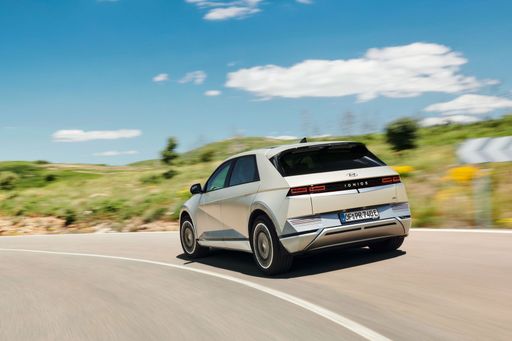 @ hyundai.news
@ hyundai.news
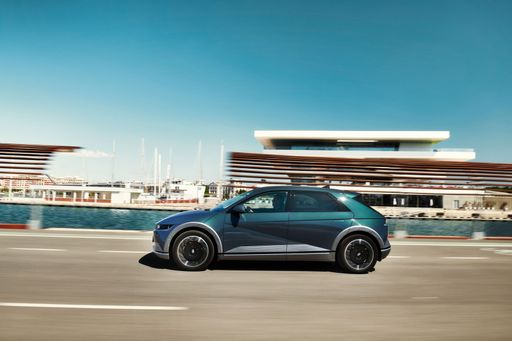 @ hyundai.news
@ hyundai.news
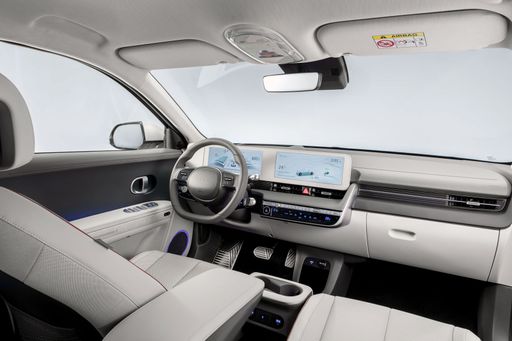 @ hyundai.news
@ hyundai.news
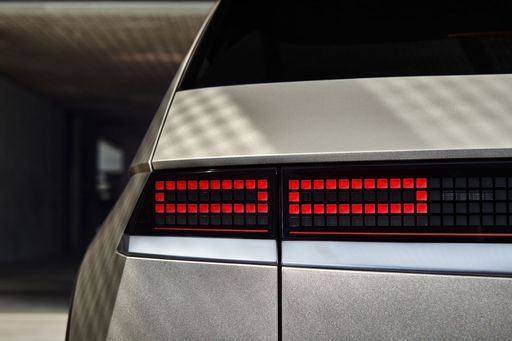 @ hyundai.news
@ hyundai.news
Mercedes EQE
The Mercedes-Benz EQE epitomises the brand's commitment to luxury and electric mobility, offering a seamless blend of cutting-edge technology and elegant design. Inside, occupants are treated to a sophisticated cabin that combines high-quality materials with state-of-the-art infotainment features, ensuring a refined driving experience. On the road, the EQE impresses with its smooth, quiet ride and impressive agility, making it a standout choice for those seeking both comfort and sustainability.
details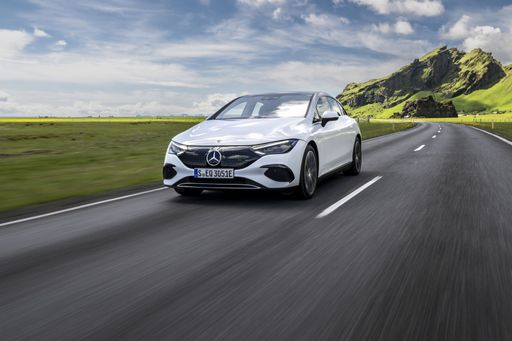 @ group-media.mercedes-benz.com
@ group-media.mercedes-benz.com
 @ group-media.mercedes-benz.com
@ group-media.mercedes-benz.com
 @ group-media.mercedes-benz.com
@ group-media.mercedes-benz.com
 @ group-media.mercedes-benz.com
@ group-media.mercedes-benz.com
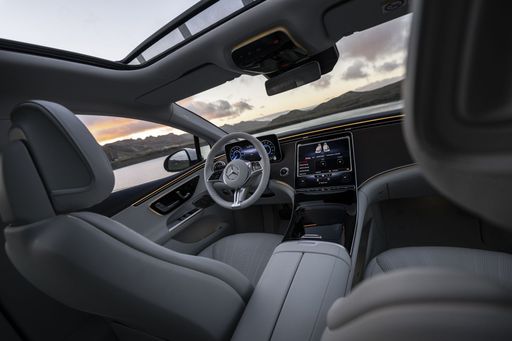 @ group-media.mercedes-benz.com
@ group-media.mercedes-benz.com

|

|
|
|
|
Costs and Consumption |
|
|---|---|
|
Price
38500 - 64200 £
|
Price
57600 - 94900 £
|
|
Consumption L/100km
-
|
Consumption L/100km
-
|
|
Consumption kWh/100km
15.6 - 21.2 kWh
|
Consumption kWh/100km
15.8 - 20.7 kWh
|
|
Electric Range
440 - 570 km
|
Electric Range
502 - 691 km
|
|
Battery Capacity
63 - 84 kWh
|
Battery Capacity
90.5 - 96 kWh
|
|
co2
0 g/km
|
co2
0 g/km
|
|
Fuel tank capacity
-
|
Fuel tank capacity
-
|
Dimensions and Body |
|
|---|---|
|
Body Type
SUV
|
Body Type
Sedan
|
|
Seats
5
|
Seats
5
|
|
Doors
5
|
Doors
4
|
|
Curb weight
1955 - 2275 kg
|
Curb weight
2375 - 2540 kg
|
|
Trunk capacity
480 - 520 L
|
Trunk capacity
430 L
|
|
Length
4655 - 4715 mm
|
Length
4946 - 4964 mm
|
|
Width
1890 - 1940 mm
|
Width
1961 mm
|
|
Height
1585 - 1605 mm
|
Height
1492 - 1510 mm
|
|
Max trunk capacity
1540 - 1580 L
|
Max trunk capacity
-
|
|
Payload
385 - 530 kg
|
Payload
545 - 600 kg
|
Engine and Performance |
|
|---|---|
|
Engine Type
Electric
|
Engine Type
Electric
|
|
Transmission
Automatic
|
Transmission
Automatic
|
|
Transmission Detail
Reduction Gearbox
|
Transmission Detail
Reduction Gearbox
|
|
Drive Type
Rear-Wheel Drive, All-Wheel Drive
|
Drive Type
All-Wheel Drive, Rear-Wheel Drive
|
|
Power HP
170 - 650 HP
|
Power HP
265 - 625 HP
|
|
Acceleration 0-100km/h
3.5 - 8.5 s
|
Acceleration 0-100km/h
3.5 - 6.9 s
|
|
Max Speed
185 - 260 km/h
|
Max Speed
210 - 220 km/h
|
|
Torque
350 - 770 Nm
|
Torque
550 - 950 Nm
|
|
Number of Cylinders
-
|
Number of Cylinders
-
|
|
Power kW
125 - 478 kW
|
Power kW
195 - 460 kW
|
|
Engine capacity
-
|
Engine capacity
-
|
General |
|
|---|---|
|
Model Year
2024
|
Model Year
2024 - 2025
|
|
CO2 Efficiency Class
A
|
CO2 Efficiency Class
A
|
|
Brand
Hyundai
|
Brand
Mercedes-Benz
|
What drive types are available for the Hyundai IONIQ 5?
The Hyundai IONIQ 5 is available as Rear-Wheel Drive or All-Wheel Drive.
The prices and data displayed are estimates based on German list prices and may vary by country. This information is not legally binding.
